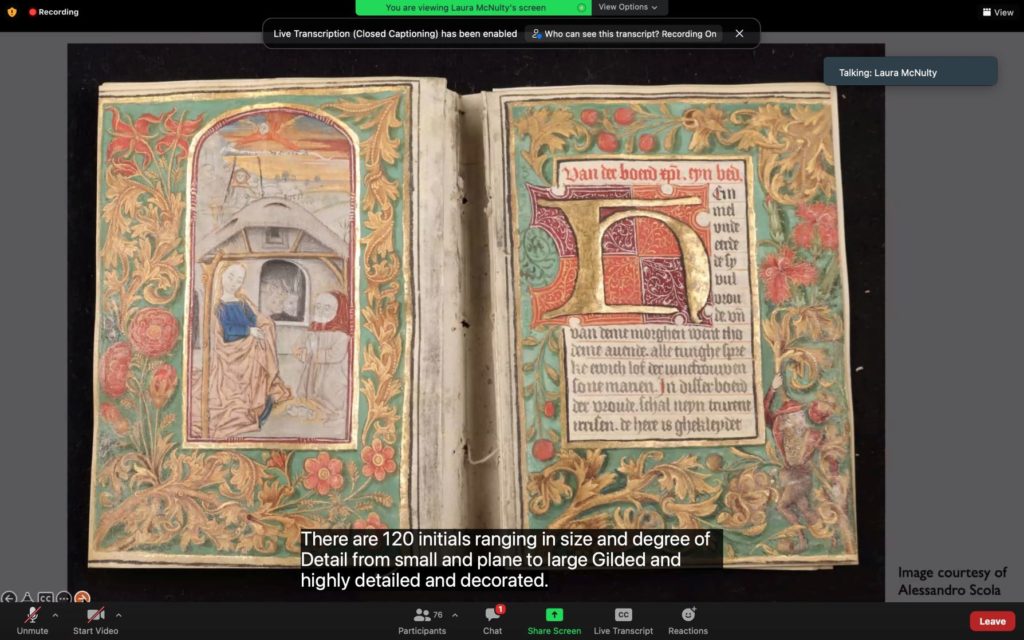Ring 3: The Great Beyond
Treatment of a 15th century Illuminated Book of Hours
Presented by Laura McNulty, Samuel H. Kress Conservation Fellow, Department of Preservation & Conservation, Sheridan Libraries, Johns Hopkins University
On January 20th, a virtual audience tuned in to the final installment of the Washington Conservation Guild’s 2022 3-Ring Circus presentation series. Ring 3 of the series, entitled “The Great Beyond,” included a presentation by book conservator Laura McNulty, who offered an insider’s look at her ongoing treatment of the Lunenborch Manuscript, a fifteenth-century illuminated book of hours.
Though unimposing in size at just 112 mm tall, the fully illuminated manuscript is a stunning artifact, and the story of its journey to the conservation bench is as fascinating as the object itself. The manuscript was completed in 1492 for one Hans Lunenborch—precise details which might have escaped us forever if not for the handy colophon on the work’s final leaf. During the last half of the fifteenth century, manuscript producers pulled out all the stops to outshine the speedy production and ready availability of printed books, and the shine on this Book of Hours is impossible to miss. The manuscript consists of 244 parchment leaves decorated with 67 full-page illuminations, nine partial-page illuminations, and 120 initials, from the simplest colored-ink place markers to extravagantly gilt and painted letterforms. Its presence was noted in a 1920 survey of manuscripts in the Peabody Library, but was absent in the 1960 survey, having inexplicably vanished from the Library’s collection somewhere in between. The book was considered lost until 2007, when an unmarked box containing the manuscript was mysteriously delivered to the Library, reuniting the manuscript with the collection after almost 50 years.
Treatment on the Lunenborch Manuscript began in 2011 with photo-documentation and disbinding, freeing the fifteenth-century manuscript from its nineteenth-century rebinding. In 2019, treatment resumed with diagramming of the manuscript’s variously collated sections. This was the state of the object when McNulty resumed treatment in 2021: little more than a stack of parchment leaves and folios, and a looming challenge to formulate a treatment plan sympathetic to the manuscript’s unique historical and physical properties. McNulty used a medium-weight usumino Japanese tissue and gelatin mousse to guard damaged folios and hinge single leaves into place before preparing several full-scale models of the textblock to find the ideal binding structure. As the manuscript will be publicly accessible following treatment, its new binding needs to manage the swell of the repaired sections, fully support the original parchment textblock, and facilitate safe, smooth opening of the book for researchers and library patrons.
At the time of this presentation, McNulty had finished resewing the Lunenborch Manuscript on hand-spun cord supports and begun testing board attachment techniques before proceeding with the alum-tawed goatskin covering she demonstrated on one of her models.

Summary by: Mitchel Gundrum, Conservator Technician, National Archives and Records Administration
Meeting Venue: Virtual
Attendance: 80 participants